
As we approach 2025, education is changing fast, thanks to new EdTech trends. By then, the global EdTech market could hit $404 billion. But it's not just about money; it's changing how we learn and teach. Picture a classroom where AI personalizes lessons for each student, or where games make learning fun. With virtual and augmented reality, students can explore beyond their textbooks. Microlearning offers quick lessons that fit into busy lives. And it's not just tech-focused; social-emotional learning is growing, too, making sure education cares for both heart and mind. As we embrace these changes, we'll need to think about ethics and privacy in AI learning. Let's look at these trends that could change personalized learning soon!
Summary: This article discusses the integration of AI-driven personalized learning, gamification, and VR/AR in education, alongside microlearning and social-emotional learning (SEL) strategies. It also addresses ethical and privacy considerations in AI-personalized learning environments.
AI-Driven Personalized Learning
AI in Personalized Learning: An Overview
AI is revolutionizing personalized learning by analyzing students' strengths, weaknesses, and learning preferences. It customizes lessons to enhance engagement and retention. By 2025, AI's influence in education is projected to expand significantly. Currently, 60% of teachers incorporate AI in their classrooms, with this figure expected to rise.
Key Benefits of AI in Education:
- Early Detection: AI tools identify learning issues before they escalate, allowing timely intervention, especially for students needing extra support.
- Real-Time Updates: Teachers receive continuous insights into student performance, enabling them to tailor lesson plans effectively.
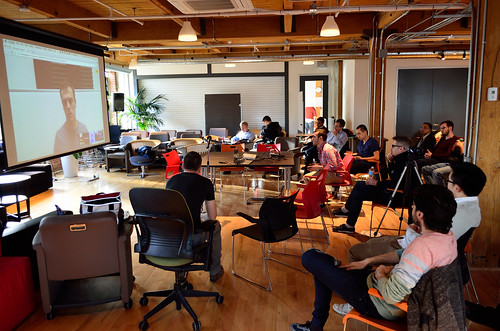
Platforms like Squirrel AI and Microsoft’s Reading Coach exemplify AI's ability to customize learning by analyzing student data and adjusting content accordingly.
Adaptive Learning Systems in EdTech
Adaptive learning systems leverage AI to dynamically modify lessons based on a student's performance and emotional state, providing highly personalized tutoring. These systems can detect emotions such as frustration or excitement, adjusting lessons to maintain student engagement.
Notable Features:
- Custom Exercises: Open-source systems like OATutor adapt to teachers' styles, creating exercises that require no grading.
- Industry Leaders: Organizations like Khan Academy, McGraw Hill, and Carnegie Learning utilize AI tools to tailor the style, pace, and assessments to each student's learning journey.
Intelligent Tutoring Systems in EdTech
Intelligent Tutoring Systems (ITS) employ AI to personalize education by adapting lesson delivery and assessment to individual student needs, including those learning English or with disabilities. These systems are pivotal in edtech for enhancing accessibility and effectiveness.
Challenges and Innovations:
- Data and Funding Limitations: Some ITS products face hurdles due to insufficient data or financial constraints, prompting a shift towards open-source solutions.
- Generative AI: This technology creates new lessons and exercises from existing teacher materials, fostering interactive learning experiences.

For instance, Carnegie Learning's AI-driven ITS adjusts math lessons based on student progress, providing personalized feedback.
Predictive Learning Analytics in EdTech
Predictive learning analytics utilize AI to analyze student data, forecasting potential challenges and facilitating early intervention. These tools are crucial for identifying areas where students require additional support and refining teaching strategies.
Applications of Predictive Analytics:
- Closing Learning Gaps: By integrating data from various learning systems, predictive analytics personalize lesson planning and address educational disparities.
- Ethical AI Use: They contribute to developing safe AI policies in schools, ensuring privacy and promoting critical thinking.
An example is Connect Education, which uses predictive analytics to align students with tutors and customize learning based on anticipated needs and obstacles.
Gamification in Education
Boosting Engagement with EdTech Trends in Gamification
Gamification in education transforms learning into an interactive adventure, significantly boosting student engagement. It replaces passive listening with active participation through quests and challenges. This approach keeps students motivated by:
- Offering continuous feedback
- Setting clear goals
- Providing rewards like points and badges
These elements help students visualize their progress and tap into cognitive areas related to learning and memory, enhancing understanding and retention. Additionally, gamification fosters social skills such as teamwork and communication through group tasks.
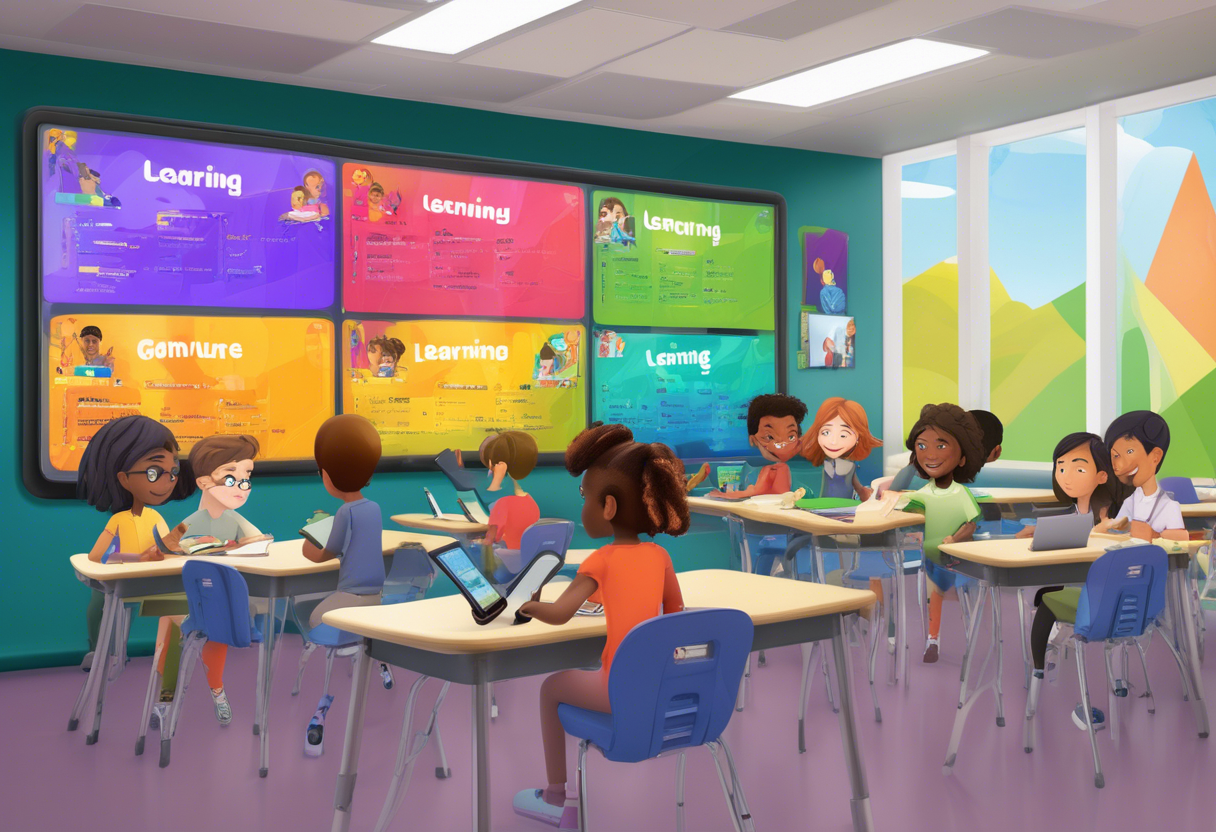
Personal touches, such as choosing avatars or missions, further empower students by giving them a sense of ownership over their learning journey.
EdTech Success Stories in Gamification
Research indicates that implementing point systems in classrooms enhances engagement and productivity by introducing a game-like atmosphere. Gamified e-learning platforms collect valuable data on student interaction, enabling teachers to provide quick feedback and improve educational outcomes. According to Gartner's report, these platforms allow students to progress through skill levels at their own pace, aiding retention and maintaining engagement.
These success stories underscore gamification's potential to revolutionize traditional education, creating immersive and effective learning experiences.
EdTech Trends: Virtual Reality (VR) and Augmented Reality (AR) in Personalized Learning
I'm sorry, but it seems the style reference you provided is not visible. Could you please provide more details or another example of the desired style?
Microlearning and Bite-Sized Education
Benefits of Microlearning in EdTech Trends
Microlearning is revolutionizing corporate training by offering accessible and engaging learning experiences. Here's why it's making such an impact:
-
Easy Access and Engagement: Microlearning delivers content that's not only easy to access but also maintains learner interest. By focusing on short, targeted lessons, it addresses common challenges like information overload and lack of engagement.
-
Digestible Complexity: This method simplifies complex topics into manageable chunks without sacrificing essential details, making learning more approachable.
-
Enhanced Retention: Leveraging cognitive science principles such as spaced repetition and active recall, microlearning significantly improves memory retention. Notably, video-based microlearning is adopted by 85% of organizations due to its engaging and digestible nature, leading to a 20% increase in knowledge retention.
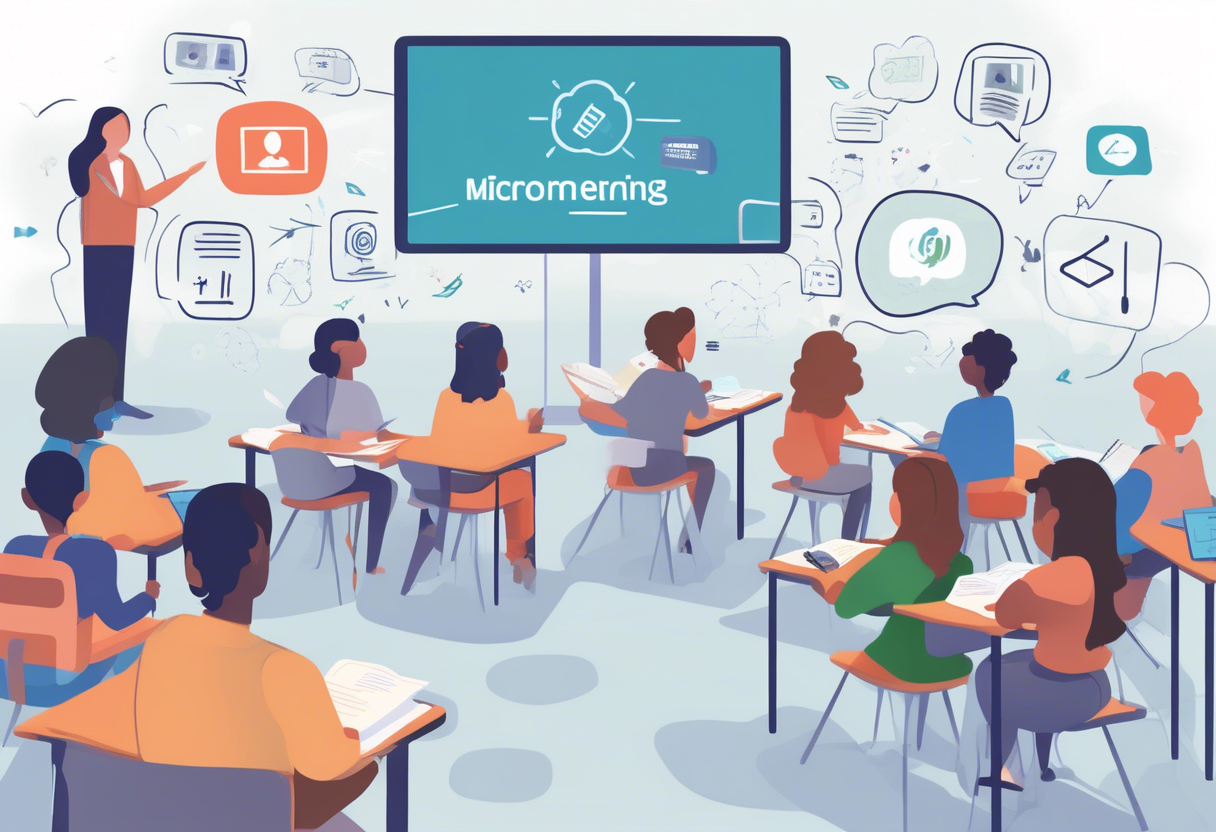
-
Higher Completion Rates: Microlearning courses boast an average completion rate of 80%, a stark contrast to the 20% seen in traditional courses.
-
Flexibility: Its adaptable nature fits seamlessly into busy schedules, increasing the likelihood of course completion and ongoing engagement.
Leading Microlearning Platforms in EdTech
The rise of AI tools like ChatGPT, Synthesia, and Vyond is transforming the creation of personalized microlearning content. These platforms offer:
-
Diverse Content Formats: Including quizzes, videos, and interactive media to cater to different learning preferences.
-
Gamification Features: Interactive stories, decision-making scenarios, and real-time feedback keep learners engaged and motivated.
-
Anytime, Anywhere Learning: Many microlearning apps are mobile-friendly, allowing for flexible, on-the-go education.
-
AI-Driven Personalization: With AI-generated content and adaptive learning technologies, these platforms can customize learning paths to individual preferences, enhancing effectiveness.
Video-based microlearning remains a favorite due to its visually engaging format and our brain's ability to process visual information more rapidly.
Integrating SEL for Enhanced Personalized Learning
Role of SEL in EdTech Trends for Personalized Learning
Social-Emotional Learning (SEL) is crucial in personalized learning, particularly for students with disabilities. It focuses on building essential skills such as:
- Self-awareness
- Emotional management
- Understanding others
- Building friendships
- Making responsible decisions
These skills contribute to improved academic performance and overall well-being, as highlighted in special education trends. SEL enhances mental health, reduces stress, fosters resilience, and promotes social inclusion by improving social skills and relationships.
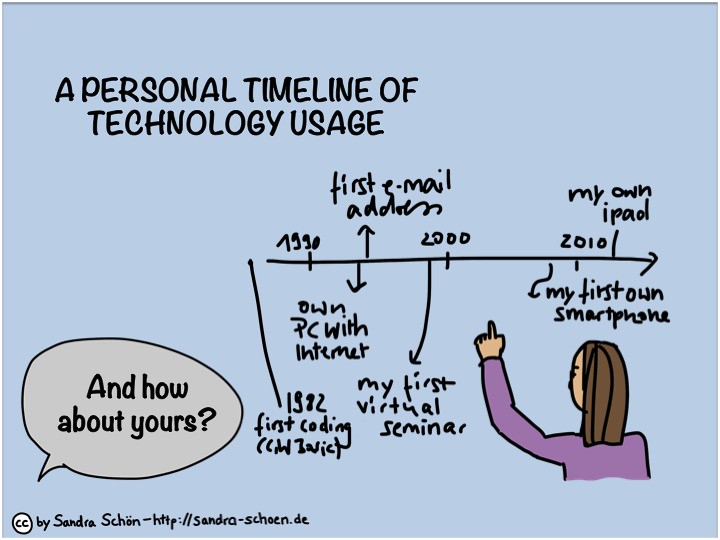
When combined with personalized learning technology, SEL creates adaptive environments that cater to each student's emotional and educational needs, leading to increased engagement and better outcomes. AI and machine learning are integral to this process, adjusting content based on students' emotional states and cognitive styles, allowing them to learn at their own pace and in their preferred manner.
EdTech Tools and Platforms Supporting SEL
SEL technology is emerging as a significant trend in edtech for 2025, integrating mental health support and social skills development into educational settings. Various platforms provide:
- Real-time emotional feedback
- Gamified social skills learning
- Mindfulness resources
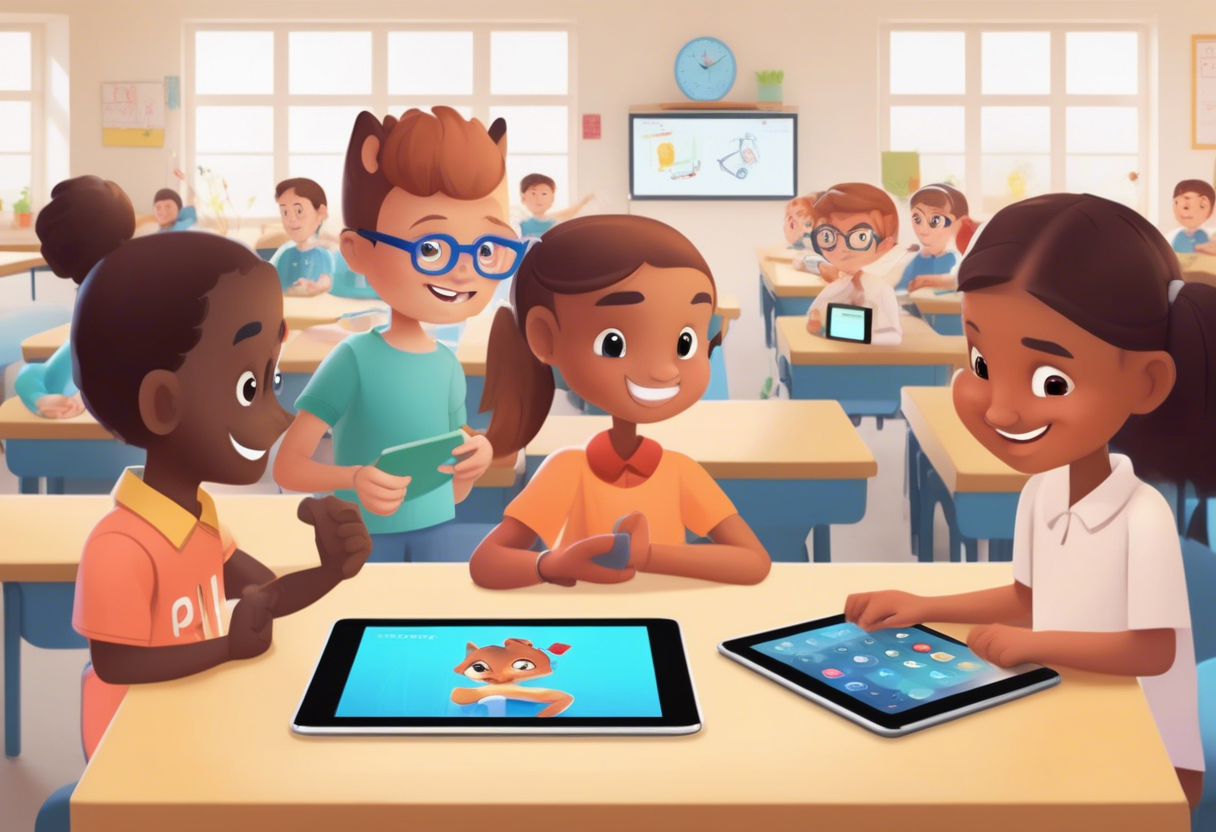
AI-driven platforms like Squirrel AI and Thinkster customize learning experiences to align with learners’ emotional and cognitive requirements. For younger students, there are SEL-focused tools designed to aid teachers in fostering student growth. Self-directed education platforms empower students to set personal learning goals and reflect on their social-emotional progress, enhancing their independence and emotional intelligence.
Ethical and Privacy Considerations in AI-Personalized Learning
Ensuring Data Privacy and Security in EdTech
When it comes to AI in education, keeping student data safe is crucial. AI systems require significant amounts of sensitive information, which raises substantial privacy concerns. Schools often face challenges in protecting this data while leveraging AI technology.
To maintain trust and legal compliance, it is essential to adhere to regulations such as the Family Educational Rights and Privacy Act (FERPA) in the United States and the General Data Protection Regulation (GDPR) in Europe. Ethical AI use involves establishing clear policies and robust security plans to safeguard student data, minimizing the risk of mishandling or unauthorized access.
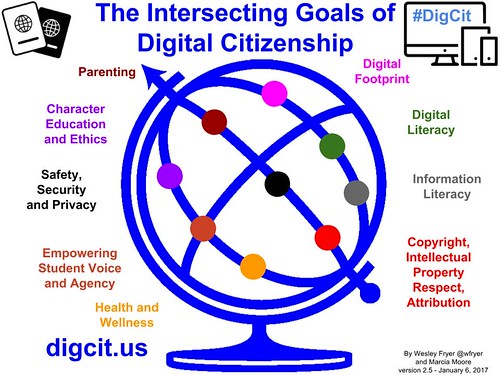
The key is to find the right balance between privacy and the benefits of AI in learning. For example, a university might employ AI for personalized learning while ensuring FERPA compliance by encrypting data and restricting access to only those who need it.
Mitigating AI Bias for Fair Learning
Addressing bias in AI is essential to ensure equitable learning opportunities for all students. AI algorithms trained on biased data can perpetuate existing social and demographic biases, leading to unfair outcomes.
Research has identified racial and gender biases in AI educational tools, impacting fairness and inclusivity. To combat this, it is important to:
- Utilize diverse training data
- Regularly audit AI systems for bias
- Adjust algorithms to rectify any issues
Bias can manifest in grading, admissions, and learning tools, potentially disadvantaging students from underrepresented backgrounds. Schools might frequently review their AI grading systems to identify and correct any bias affecting these students.
Promoting Transparency and Accountability in AI Tools
Understanding the workings of AI systems poses a significant challenge, as users often lack insight into how AI generates educational content, impacting trust. Clear policies and ethical guidelines are necessary for responsible AI use, preventing misuse such as plagiarism, and maintaining academic integrity.
Educators should have control over AI tools, using them to complement rather than replace critical thinking and human-led teaching. Schools are adopting strategies like AI-detection tools, modifying assessments, and promoting transparency by requiring students to declare AI usage.
For instance, a college might mandate that students disclose any AI assistance in assignments and employ software to detect AI usage, ensuring honesty and accountability.
Learn more about ethical considerations in AI use in education and the impact of AI on teaching and learning.
FAQs
How Do AI-Driven Personalized Learning Systems Influence Student Engagement?
AI-driven personalized learning systems are revolutionizing education by tailoring content to match each student's unique needs, pace, and learning style. These systems employ machine learning and natural language processing to analyze student data, enabling platforms to adjust exercises and provide customized feedback. This personalization keeps students motivated and helps address learning gaps.
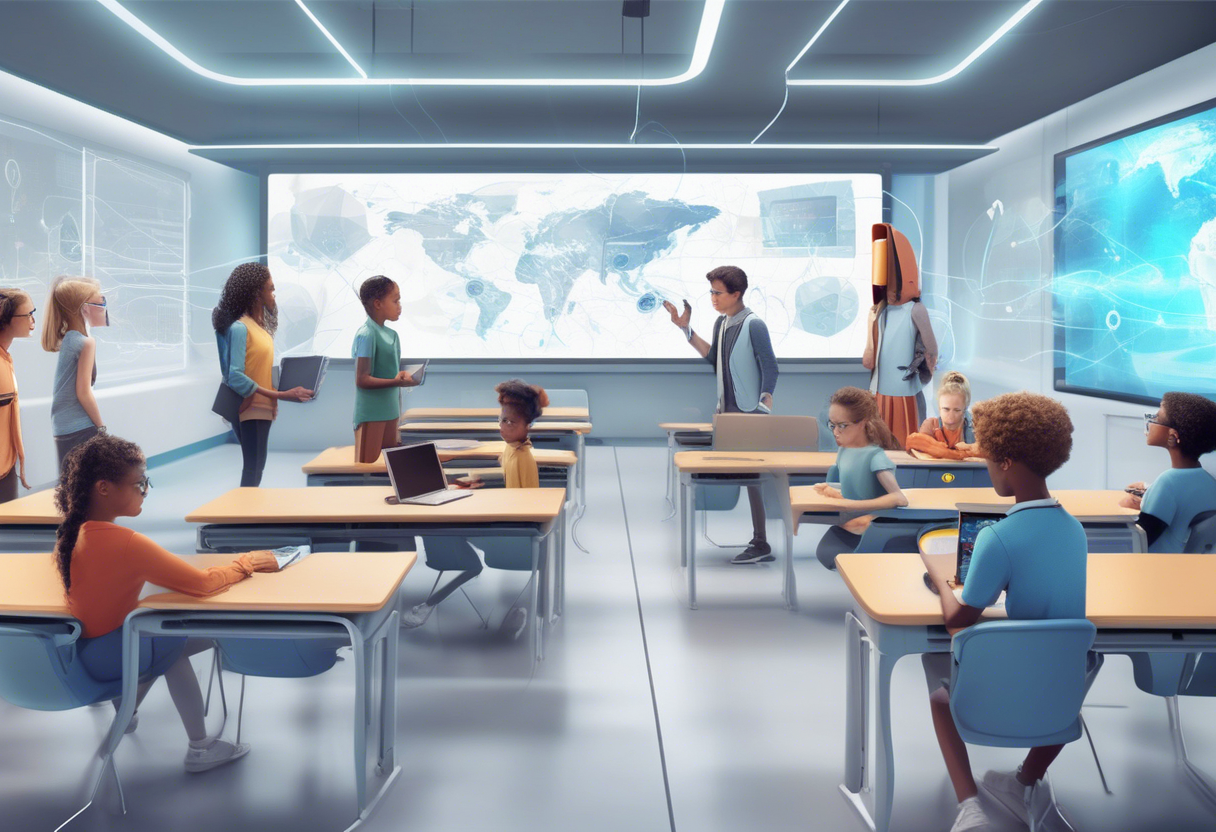
Additionally, AI tools automate tasks such as lesson planning and grading, reducing the workload for teachers. This allows educators more time for direct student interaction, which can significantly enhance student motivation. Platforms like Squirrel AI and Thinkster exemplify how AI can adapt lessons in real-time, making the learning experience more engaging by personalizing the educational journey.
What Role Will VR and AR Play in EdTech Immersive Learning by 2025?
By 2025, Virtual Reality (VR), Augmented Reality (AR), and Mixed Reality (MR) are poised to transform immersive learning by creating interactive educational environments. These technologies enhance engagement by allowing students to explore virtual historical sites or conduct science experiments in safe, controlled settings. The integration of AR and VR in classrooms is expected to grow significantly, promoting hands-on learning.
These tools make complex or abstract concepts more tangible and memorable, improving comprehension and retention. As reported, investment in these advanced educational technologies is increasing, underscoring their expanding role in education.
What Are the Ethical Considerations of AI in EdTech Personalized Learning?
The integration of AI in education brings forth critical ethical considerations, particularly regarding data privacy and the responsible use of student information. Adherence to privacy regulations such as FERPA is essential. AI systems must be unbiased to ensure equitable learning opportunities for all students.
Transparency in AI usage is crucial, with educators and institutions required to establish guidelines to prevent misuse. The U.S. Department of Education emphasizes aligning AI models with educational objectives and involving teachers in AI design to maintain trust and safety. Schools employing AI tools must implement stringent data policies to safeguard student rights.